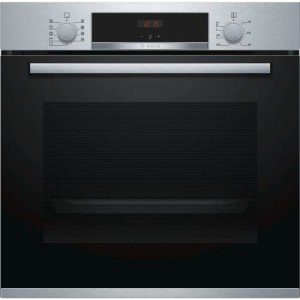The Rise of Built-In Ovens: A Seamless Integration of Functionality and Design
Worldwide of modern kitchen style, aesthetics and functionality go together, and built-in ovens have actually emerged as a popular option for homeowners seeking to elevate their culinary spaces. These devices not just enhance performance however likewise contribute to a cohesive cooking area design that shows personal style and taste. Let's explore what built-in ovens are, their advantages, and design considerations to keep in mind when planning your kitchen remodel.
What Are Built-In Ovens?
Built-in ovens, as the name recommends, are ovens that are integrated into cabinets or walls, supplying a structured look that stands in contrast to conventional freestanding ovens. They are available in numerous setups, consisting of single, double, and even wall-mounted alternatives, accommodating different cooking needs and kitchen area layouts. Built-in ovens can be electric, gas, or even steam, allowing versatility based on cooking choices.
Advantages of Built-In Ovens
Space Efficiency: Built-in ovens enable for more effective usage of cooking area space. By embedding the oven within cabinets or walls, you can maximize valuable counter space and produce a more open layout.
Visual appeals: These ovens offer a smooth, modern-day look that can be customized to match the kitchen area's total style. They can be combined with kitchen cabinetry finishes and colors, creating an unified look.
Ergonomic Design: Built-in ovens can be put at eye level, making it much easier to keep track of cooking progress without bending down. This style consideration boosts the user experience, especially for those with mobility issues.
Enhanced Functionality: Many built-in designs use innovative functions like convection cooking, self-cleaning choices, and clever technology that permits remote operation. This flexibility can considerably boost cooking capabilities.
Value Addition: Investing in built-in ovens is often viewed as an upgrade, adding considerable resale value to the home. Prospective purchasers are generally brought in to contemporary, well-designed kitchen areas with high-quality devices.
Style Considerations
When planning to integrate a built-in oven into your kitchen area, a few necessary elements must be considered:
Cooking Area Layout: Assess the design of your kitchen area to determine where the oven will be most practical. The common placements consist of under countertops, within tall cabinets, or above a wall system.
Style and Finish: Choose an oven that matches your general cooking area visual. Built-in ovens are readily available in various finishes such as stainless-steel, black, or custom-made cabinetry panels. Matching inbuilt ovens to your kitchen area decor ensures coherence and visual appeal.
Size and Capacity: Built-in ovens can be found in numerous sizes, so it's important to think about just how much cooking space you require. If you often host big gatherings or family suppers, opting for a double oven might be helpful.
Ventilation: Ensure that there is sufficient ventilation within the kitchen location, particularly if selecting a gas oven. Suggested Looking at will help to maintain air quality and cooking area comfort.
Smart Technology: For the tech-savvy house owner, consider built-in ovens with wise capabilities that integrate with home automation systems. Functions such as remote tracking, pre-programmed dishes, and voice control can boost your cooking experience.
Conclusion

Built-in ovens are more than simply cooking appliances; they are an essential part of the modern kitchen area landscape. With benefits such as enhanced area efficiency, visual appeal, and enhanced functionality, it's no surprise that they are a preferred choice for many house owners. By thoroughly considering the layout, style, size, and technology of your built-in oven, you can ensure it complements your kitchen area vision while delivering outstanding cooking efficiency. Whether remodeling an old kitchen or creating a new one, built-in ovens stand at the leading edge of mixing functionality with sophistication in home cooking spaces.
